It might be a bit hard to find diabetes-friendly treats that will help keep the level of your blood sugar in a safe and healthy range, but it’s definitely not impossible. In fact, the answer is right there in your refrigerator right in the produce drawer or in the fruit basket sitting on your countertop.
While many skeptics still choose to hold on to the belief that taking fruits isn’t safe if you are watching your A1C, research has proven time and again that it is nothing more than another diabetes myth. The American Diabetes Association clearly list many fruits that are rich in beneficial vitamins, minerals and fibers which are quite important in regulating blood sugar level and helps lower the risk of type 2 diabetes in patients. An opinion also shared by the Harvard T.H. Chan School of Public Health
Many of the vegetables and whole grains recommended for diabetes contain fiber. Fiber can also be beneficial to health by promoting a feeling of fullness. This helps to cut down on your unhealthy cravings while preventing you from stuffing up yourself too much. By keeping your weight under control this way, you increase your body’s insulin sensitivity which helps in diabetes management.
However, you still need to know how to choose the best fruits for diabetes since some fruits like juice are still not recommended. Fruits such as berries, apricots, citrus and you might be surprised to hear apples, can also be quite beneficial for you A1C and contribute to your overall body health by helping to fight inflammation and keep blood pressure level at a normal level.
But as beneficial as they are, you still need to be wise about how you keep track of your carbohydrate just like you do with other food on your diabetes diet. Fruits should be consumed in whole and in their natural form. It is better to just stick to fresh food from the freezer section at the grocery store or the produce section rather than taking syrups and any other form of processed food that have sugar added to them since they can potentially spike the level of sugar in your blood. Most whole fruits generally rank low on the Glycemic index chart which measures the effect of food on your blood sugar.
Following these steps if you are diabetic will help to maintain your blood sugar level within a very healthy range. This helps to reduce the possibility of complications like diabetic retinopathy, kidney disease, glaucoma, cataracts, and other eyesight issues as well as life-threatening diseases such as stroke and heart disease.
So the when next you suddenly have a crazy raving sweet things, you can simply reach out for some of these juicy treats and munch away or whip up a diabetes-friendly smoothie for yourself.
Berries, A Rich source of Refreshing and Disease-Fighting Antioxidants
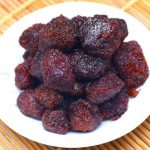 It’s perfectly okay to indulge yourself in berries of all types whether blueberry or strawberry. The ADA name berries as a superfood for diabetics. They are packed with vitamins, fibers, and antioxidants and they are Low-GI foods as well. You get 62 calories and 16grams of carbohydrates when in just three-quarters of a cup of fresh blueberries. One great way to take them is to add the berries in a parfait for a nutritious dessert or as breakfast by adding alternating layers of the fruits with non-fat yogurt.
It’s perfectly okay to indulge yourself in berries of all types whether blueberry or strawberry. The ADA name berries as a superfood for diabetics. They are packed with vitamins, fibers, and antioxidants and they are Low-GI foods as well. You get 62 calories and 16grams of carbohydrates when in just three-quarters of a cup of fresh blueberries. One great way to take them is to add the berries in a parfait for a nutritious dessert or as breakfast by adding alternating layers of the fruits with non-fat yogurt.
Fight inflammation with Tart Cherries
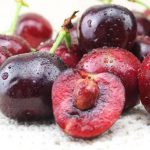 Tart cherry is another Low-GI fruit you can add to your diabetes-friendly meal plan. Just a cup of tart cherries contains 19grams of carbs and 72 calories. They are also especially good for treating inflammation. They are also rich in antioxidants which makes them desirable for the treatment of heart diseases, cancer, and other similar diseases. You can purchase fresh, frozen, canned or dried tart cherries. However, many canned cherries and dried fruits potentially contain more sugar than fresh fruits so make sure you check their labels before purchasing them.
Tart cherry is another Low-GI fruit you can add to your diabetes-friendly meal plan. Just a cup of tart cherries contains 19grams of carbs and 72 calories. They are also especially good for treating inflammation. They are also rich in antioxidants which makes them desirable for the treatment of heart diseases, cancer, and other similar diseases. You can purchase fresh, frozen, canned or dried tart cherries. However, many canned cherries and dried fruits potentially contain more sugar than fresh fruits so make sure you check their labels before purchasing them.
Get Metabolism-Boosting Potassium from Sweet, Juicy Peaches
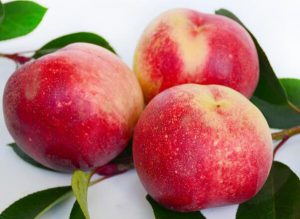 Peaches are not just juicy warm-weather treats they are also diabetes-friendly treats as well. Peaches are rich in Vitamin A, Vitamin C, fiber and potassium. Add a fruity twist to your iced tea with fresh peaches or add some slices to low-fat buttermilk and crushed ice with some ginger or cinnamon for a quick smoothie.
Peaches are not just juicy warm-weather treats they are also diabetes-friendly treats as well. Peaches are rich in Vitamin A, Vitamin C, fiber and potassium. Add a fruity twist to your iced tea with fresh peaches or add some slices to low-fat buttermilk and crushed ice with some ginger or cinnamon for a quick smoothie.
Apricots for a delicious, Fiber-Rich Bite
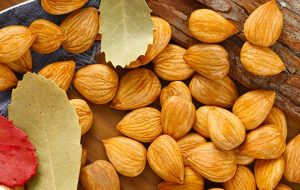 You get just 17 calories and 4 grams of carbohydrate in one apricot which makes it just another brilliant choice for your meal plan. With just four apricots, you get more than half of your required daily intake of vitamin A. They are also excellent sources of fiber as well. You can add apricots to your fruit salad or dice it into your cold or hot cereal breakfast.
You get just 17 calories and 4 grams of carbohydrate in one apricot which makes it just another brilliant choice for your meal plan. With just four apricots, you get more than half of your required daily intake of vitamin A. They are also excellent sources of fiber as well. You can add apricots to your fruit salad or dice it into your cold or hot cereal breakfast.
Apples; Quick Fibrous Vitamin C–Rich Snack
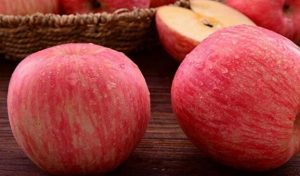 They say one apple a day keeps the physician away. This can also be true even for a diabetes patient. An apple contains 77 calories and 21grams of carbs. They are also rich and Vitamin C and a great source of fiber. Eat all parts of your fresh apples including the skin as they are full of antioxidants and are highly nutritious.
They say one apple a day keeps the physician away. This can also be true even for a diabetes patient. An apple contains 77 calories and 21grams of carbs. They are also rich and Vitamin C and a great source of fiber. Eat all parts of your fresh apples including the skin as they are full of antioxidants and are highly nutritious.
Oranges, a Juicy and Refreshing Source of Vitamin C
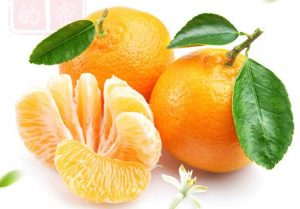 Just one orange is enough to supply all of your daily Vitamin C requirement. Another low-GI fruit, oranges contain only 62 calories and 15 grams of carbs. They are also rich in potassium and folate which are important nutrients that help to maintain a stable blood pressure. Asides oranges, grapefruit, and other citrus fruits are also beneficial to health as well.
Just one orange is enough to supply all of your daily Vitamin C requirement. Another low-GI fruit, oranges contain only 62 calories and 15 grams of carbs. They are also rich in potassium and folate which are important nutrients that help to maintain a stable blood pressure. Asides oranges, grapefruit, and other citrus fruits are also beneficial to health as well.
Pears- Easy Snacks rich in Vitamin K and Fiber
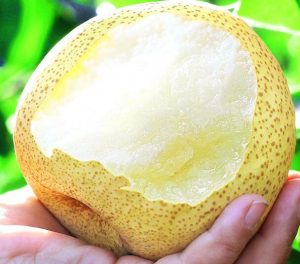 Pears are rich in fiber as well as Vitamin K which means adding them to a diabetes diet plan is a great idea. Another interesting thing about pears is that unlike other fruits, their flavor and texture improve after they are picked. Before stowing your pears away in the refrigerator, you should store them in at normal room temperature first until they are ripe. You can slice one up and add it to your spinach salad for a tasty treat.
Pears are rich in fiber as well as Vitamin K which means adding them to a diabetes diet plan is a great idea. Another interesting thing about pears is that unlike other fruits, their flavor and texture improve after they are picked. Before stowing your pears away in the refrigerator, you should store them in at normal room temperature first until they are ripe. You can slice one up and add it to your spinach salad for a tasty treat.
Whole fruits are always the best
Whole fruits contain a lot of nutrients and few calories which make them a great option for diabetes patients. However, bear in mind that some fruits can contain a very high amount of sugar hence it is best you take them as a replacement for less healthy food rather than taking them in addition to your meal.
The same warning also goes for canned fruits that have had sugars added to them. fruit juice is also unnaturally concentrated which means they contain more sugar than regular fresh fruits and should be avoided as well. when you consider the fact that an apple juice is made from 4 apples or more (which you wouldn’t finish in one sitting normally) and usually contain less fiber (since the peel is removed) you will get a clearer picture of what we are talking about.
